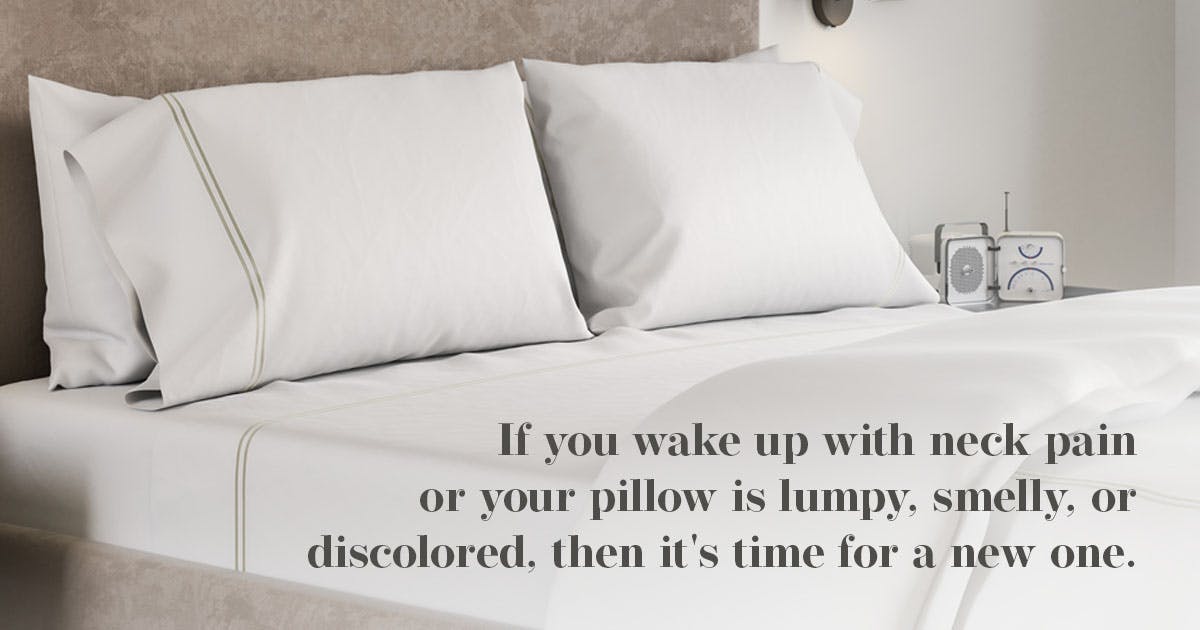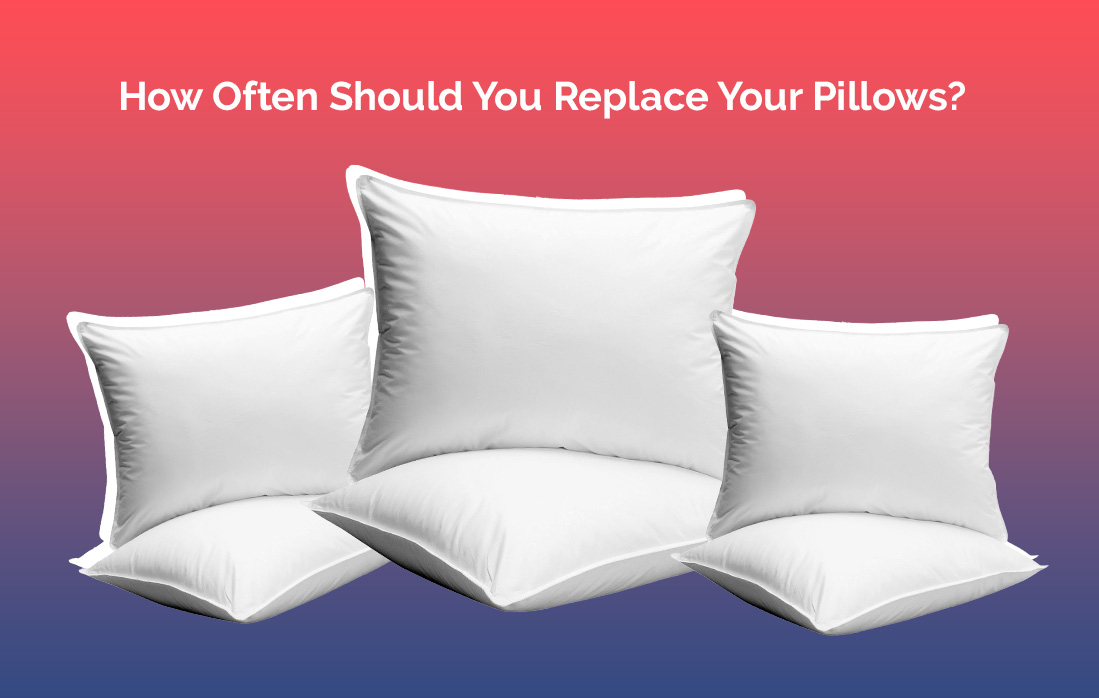How long are pillows good for? Pillows are generally good for around 2 years or sooner, as they can accumulate allergens and lose support over time. It’s important to replace your pillow every 2 years or sooner to avoid allergen buildup and maintain proper support.
Regular replacement helps in avoiding allergen accumulation and provides better support for quality sleep. A pillow’s lifespan is around 2 years or sooner, as they tend to accumulate allergens and lose support. Replacing your pillow regularly is crucial for avoiding allergen buildup and ensuring optimal support for quality sleep.
By following this guideline, you can maintain a healthy sleep environment and prevent issues related to allergen exposure.
How Long are Pillows Good for?

Understanding Pillow Lifespan
Pillows are an essential part of our sleep routine, ensuring comfort and support throughout the night. However, like any other household item, pillows also have a limited lifespan. Understanding the lifespan of pillows is crucial for maintaining optimal sleep quality and hygiene. In this article, we will explore the average lifespan of pillows and the factors that can affect their longevity.
Average Lifespan Of Pillows
The lifespan of a pillow can vary depending on several factors such as the quality of materials used and how well it is taken care of. On average, a pillow can last anywhere from 1 to 2 years.
However, it’s important to note that this is a general guideline, and individual pillows may last longer or shorter depending on their specific circumstances.
Factors Affecting Pillow Lifespan
Several factors can affect the lifespan of your pillow:
- Quality of Materials: Pillows made from high-quality materials, such as memory foam or latex, tend to have a longer lifespan compared to those made with lower quality materials.
- Usage and Sleeping Habits: How often and how heavily you use your pillow can also impact its lifespan. Frequent and prolonged use can lead to quicker wear and tear.
- Pillow Maintenance: Proper care and maintenance can extend the lifespan of your pillow. Regularly washing and fluffing your pillow, and using a pillow protector, can help keep it clean and fresh.
Moreover, environmental factors like humidity and exposure to sunlight can also contribute to the breakdown of pillow materials over time.
By considering these factors and taking appropriate steps to maintain and care for your pillows, you can ensure their longevity and enjoy a comfortable sleep experience for an extended period.
Signs That Your Pillow Needs Replacing
The average person spends about a third of their lives sleeping, making a good pillow an essential item for restorative sleep and overall well-being. However, pillows don’t last forever, and it’s important to recognize the signs that your pillow needs replacing to ensure you are getting the best sleep possible.
Signs Of Wear And Tear
Over time, your pillow will start to show signs of wear and tear, such as flattened areas, lumps, or an overall lack of fluffiness. Another common indication is the appearance of stains and discoloration, even after washing, which can be a sign of the accumulation of dust, sweat, and oils over time.
Allergies And Health Issues
Expired pillows can harbor allergens like dust mites, pet dander, and even mold, which can exacerbate allergy symptoms and respiratory issues. If you find yourself waking up with a stuffy nose, itchy eyes, or experiencing more frequent asthma attacks, it may be time to replace your pillow.
Lack Of Support And Comfort
As pillows age, they lose their ability to provide proper support for your head and neck, leading to discomfort and poor sleeping posture. If you notice that your pillow no longer maintains its shape or fails to fill the gap between your head and shoulders when lying down, it’s a clear indication that it needs to be replaced.

How Often Should You Replace Your Pillow?
Pillows are an essential component of a good night’s sleep, but do you know when it’s time to replace them? Knowing how often to replace your pillow is crucial for maintaining a clean and healthy sleeping environment. Let’s dive into the guidelines from experts and the factors to consider when determining the lifespan of your pillows.
Guidelines From Experts
Experts suggest that you should consider replacing your pillows every 1 to 2 years, depending on the type of pillow and its usage. However, some high-quality memory foam or latex pillows may last longer, up to 3-4 years.
Factors To Consider
- Material: The type of pillow material affects its lifespan. Synthetic pillows may need replacement sooner than down or memory foam.
- Usage: If you use your pillow every night, it will deteriorate faster than a pillow used less frequently.
- Hygiene: Regular washing and proper maintenance can extend the life of your pillow, while neglecting hygiene can shorten its lifespan.
- Comfort: If you notice a decrease in support or fluffiness, it’s a sign that your pillow may need replacement.
Proper Pillow Care And Maintenance
Pillows are an essential part of a good night’s sleep. They provide support and comfort for our heads and necks, ensuring that we wake up feeling refreshed and ready to take on the day. However, like anything else in our lives, pillows require proper care and maintenance to ensure they stay in good condition for as long as possible. In this section, we will explore some important tips on how to care for and maintain your pillows.
Regular Cleaning And Washing
Regular cleaning and washing are crucial to extend the lifespan of your pillows and keep them hygienic. Over time, pillows accumulate dust, dirt, sweat, and oils from our bodies, creating the perfect breeding ground for allergens and bacteria. To keep your pillows clean, follow these steps:
- Check the care label: Before cleaning your pillows, always check the care label for specific instructions from the manufacturer. Some pillows may not be suitable for machine washing.
- Machine washable pillows: For machine washable pillows, start by removing the pillowcase and any protective covers.
- Gentle cycle and mild detergent: Place the pillows in the washing machine, using a gentle cycle and mild detergent. Avoid using bleach or harsh chemicals that can damage the fabric or filling.
- Extra rinse cycle: Run an extra rinse cycle to ensure all the detergent is thoroughly rinsed out.
- Drying: To dry your pillows, tumble dry on low heat or air-dry in a well-ventilated area. Adding tennis balls or dryer balls can help fluff up the pillows.
By regularly cleaning your pillows, you can remove allergens and keep them fresh, promoting a healthier sleep environment.
Protective Pillow Covers
Protective pillow covers play a vital role in keeping your pillows clean and extending their lifespan. These covers provide an additional barrier between your pillow and allergens, sweat, and oils.
There are two main types of protective pillow covers:
- Pillowcases: A pillowcase acts as the first line of defense for your pillow, protecting it from direct contact with your body.
- Pillow protectors: Pillow protectors are zippered covers made from hypoallergenic materials. They encase the entire pillow, providing an extra layer of defense against allergens and stains. Additionally, they are often waterproof, which can be beneficial for people with allergies or those prone to night sweats.
It is recommended to regularly wash both the pillowcases and pillow protectors along with your regular bedding to maintain their cleanliness.
Fluffing And Re-fluffing
Fluffing and re-fluffing your pillows on a regular basis can help maintain their shape, support, and overall comfort. Over time, pillows can become compressed, losing their loft and becoming flat. Here are some tips for fluffing and re-fluffing your pillows:
- Give pillows a good shake: Start by giving your pillows a good shake to loosen the filling and distribute it evenly.
- Fluffing by hand: Using your hands, manipulate the pillow to fluff up the filling. Gently pull and tug on the corners to ensure even distribution.
- Pillow rolling: A technique called pillow rolling can also help restore the shape of your pillows. Start by tightly rolling the pillow, then release and unroll it. Repeat this process a few times to encourage the filling to regain its shape.
Regular fluffing and re-fluffing can help restore your pillows’ loft and make them feel plump and comfortable once again.
Environmentally Friendly Disposal Methods
Pillows are an essential part of our sleep routine, but just like any other household item, they eventually wear out and need to be replaced. When it’s time to say goodbye to your old pillow, it’s important to consider environmentally friendly disposal methods. Instead of tossing your pillow in the garbage where it will end up in a landfill, there are several options for repurposing, donating, and recycling your old pillows.
Repurposing And Donating
If your pillow is still in relatively good condition, you have the option to repurpose it for another use. Here are a few ideas:
- Use the pillow as a pet bed filler. Many animal shelters and rescue organizations are in need of soft bedding for their furry residents.
- Transform the pillow into a floor cushion for extra seating in your home.
- Donate your pillow to a local homeless shelter or transitional housing organization. They often accept gently used pillows to provide comfort to those in need.
Recycling Options
When repurposing or donating is not an option, recycling your old pillow is a great way to minimize waste. Here are a few recycling options to consider:
- Check if your local recycling center accepts pillows. Some facilities have specific guidelines for pillow recycling, so it’s best to contact them directly for information.
- Look for textile recycling programs in your community. These programs often accept pillows along with other fabric items such as clothing and blankets.
- If you have memory foam pillows, some companies offer mail-in recycling programs specifically for memory foam products.
By making use of these environmentally friendly disposal methods, you can extend the lifespan of your pillows and reduce waste. Repurposing, donating, and recycling are great ways to ensure that your old pillows are given a second life, benefiting both the environment and those in need.

Conclusion
When it comes to the lifespan of pillows, it is important to consider both hygiene and comfort factors. Pillows should ideally be replaced every two years or sooner, as they can accumulate allergens and lose their supportive properties. Additionally, regularly washing your pillow can help maintain its cleanliness and extend its lifespan.
Instead of throwing out old pillows, consider repurposing, donating, or recycling them to minimize environmental impact. Remember, a good night’s sleep starts with a fresh and comfortable pillow.

